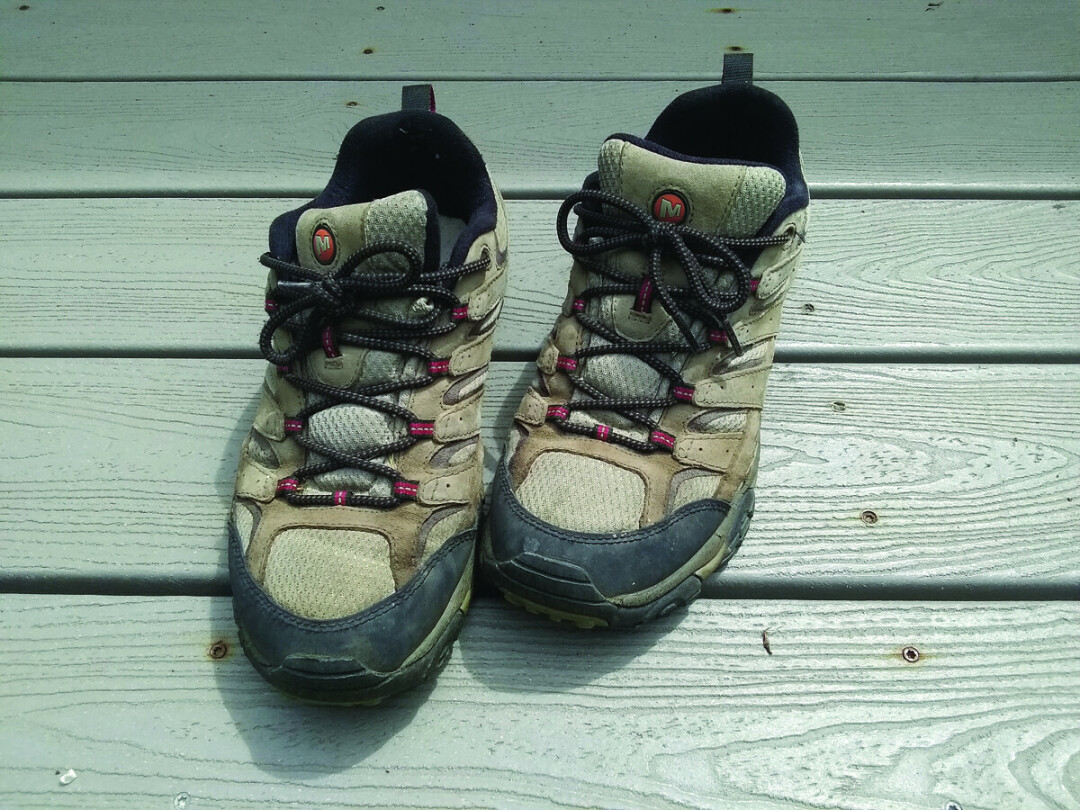The Ten (Or So) Hiking Essentials
Steve McGann | Friday Jul. 1st, 2022
“Be prepared. That is my belief and that is my motto. My practice, however, is a little different. I tend to go off in a more or less random direction myself, half-baked, half-assed, half-cocked, and half-ripped. Why? Well... all that bloody gear...” ~ Edward Abbey
Since those of us who spend time outdoors know exactly what Cactus Ed is talking about (even if we are neither as honest, nor as irreverent in expressing it), there are gear lists. And closets, garages, and the back seats of pickups to store the gear. In the last few years there have been a lot of articles, intended for prospective hikers, listing the ten essential items they should take along for a successful hike. Someone immediately brought up number eleven—a pack in which to carry the ten items. Ten is a handy number. Even, round, binary, familiar. Lists of ten things seem official. They are tough to remember with one reading, yet easy enough to memorize.
The first five items could be defined as necessary, while the last five are precautionary. Those final five could be placed in that number eleven pack and left there, always available and organized. Some of these things will be used on every hike. Some are must-haves, but may never be used. It seems a good idea to individually explain the ten choices, give the reasoning, and see if any other essential items come up during the analysis.
Footwear
All the old clichés about marching armies and the foot being the foundation of the body are no less true because they are trite and repetitive. Many shoes are adequate for everyday walking. But any ventures away from sidewalks and asphalt, not to mention distance, require better footgear. The choices are as varied as the possible applications—everything from water shoes to ski boots. For hiking, the options are typically boots or trail runners. Still not an easy choice, since the brands and styles are endless. And not only is footwear number one on the list, it is also the most individual item. Boots give more ankle and foot support, perform well in rugged conditions, and are sturdy and durable. They are also heavy, can be hot and, even when well-fit, can cause blisters. Trail runners are lightweight, cooler, and usually very comfortable. They also offer little ankle support, can allow bruises in rough terrain, and are not long-lasting with heavy use. The best approach is to match your footwear to your style of hike, be willing to experiment, and maybe begin with a lightweight hiking shoe as a compromise between a heavy boot and a light runner.
Water
No matter the length of your hike, the temperature or the terrain, hydration is key. Your body loses moisture from perspiration and respiration. Don’t wait until you are thirsty to drink. Take frequent sips during every hike. In areas where water is readily available, carry a full liter bottle and a filter. Where water is scarce, carry a liter for every three or four miles, and identify sources where you can refill. Use either a hydration pack with a tube, or carry a pack with a bottle sleeve that can be reached without taking the pack off. Drinking water should be automatic, not an afterthought or a hassle.
Maps
Navigation methods are another highly individualized choice. Paper map versus device, traditionalist versus techy. Some hikers’ only concession to tech is to have a paper map laminated. Others have two or three trail apps downloaded to their phone to ensure the route. Traditionalists point out that cell coverage is spotty in the woods and batteries run down. Tech lovers complain that some topo maps were surveyed decades ago with primitive tools. The best idea may be to be familiar with and use both systems, depending on your familiarity (or lack of it) with the area you are hiking.
Food
Easy one. Pack a snack or a meal based on how long you will be out. Whatever you enjoy that will provide sugar, salt, carbs, fat and protein. Homemade snacks or purchased energy bars. Something that is both tasty and full of calories. Fill a bag (no perishables), forget about it and leave it in the pack. Be surprised!
Raingear
Some people do not go hiking if there is a chance of rain. Some love stormy days. It is best to be ready for inclement weather. Anything from a plastic poncho to a Gore-Tex parka will work. If it rains for a long time, you are going to get wet whatever your gear, so it is nice to have something with some insulating properties. Other clothing also falls into this category. It does not hurt to keep a fleece hat, gloves, and spare socks in the pack. A packable down vest weighs almost nothing. A bandana or a buff is useful and versatile; either can even be used as a tourniquet—not a pleasant reminder, but possibly a necessary one.
Sunscreen
This category may contain more items by preference. Bug spray is as necessary as sunscreen in some areas. Chapstick, lotion, and foot powder are other items to consider.
First Aid Kit
Buy one or make one up. Be sure to include band-aids, moleskin, gauze pads, tape, an ace bandage, ibuprofen, Tylenol, and antibiotic cream. Consider individual needs for specific conditions or allergic reactions. This is the most important gear that you never want to use, but must carry.
Headlamps
Unless your hike is a moonwalk, a sunset stroll, or involves a very early morning start, most people do not plan to be out in the dark. Even so, it could happen, so pack a headlamp, and throw in some extra batteries.
Matches or lighter
It’s best to have both. Weather or water could cause a need for warmth and drying. Many locales boast of their large temperature variations in the course of a day. Physically and mentally, a fire is sometimes necessary. If you do build a fire, follow all the rules for safety, and put it dead out when you finish.
A Knife
This one is left over from the days of woodcraft, when the essentials were a rifle, an axe, a frying pan, and a knife. Still, a knife is a handy tool for cheese, salami, or cleaning fish, as well as for pack and gear repair. Whittling and thinking. A small folding model is fine; there’s no need for the machete-style Bowie knife.
That completes this list; no doubt someone’s vital item has been omitted. How about sunglasses, trekking poles, sun hat, gaiters, bear spray, pliers, music, pen and paper, phone, nylon cord, a space blanket? I wear sunglasses only on snow or in very bright sun, and use hiking sticks for backpacking, or very steep day hikes. Normally, I wear a hat and often sun protection over my ears. I’m not a fan of gaiters, but rock and sand in shoes can be irritating. Since I hike in Montana in the summer and Arizona in the winter, I pack bear spray in the north, and take needle nose pliers for cactus spines in the south. Never have had to use the bear spray, but I always have it. Have had to use the pliers for cactus a lot. If you play music, use headphones. That should not need an explanation. Better yet, listen for the high wind in the trees. A pen and paper is useful if I decide to add something to this list or want to record some wacky ideas. Most of us go nowhere without our phones, and they are part of navigation anyway. Nylon cord is useful if a marmot eats your pack straps.
There are many more things that each person may find useful, even indispensable. The beauty is that most of the listed items will fit in a medium-sized daypack and, in total, weigh less than ten pounds. If you want to pack cameras, lenses, tripods, plein air painting supplies, drones, guns, ammo, fishing tackle, the complete works of Shakespeare, a full cooler and a Dutch oven, knock yourself out. It is your back and your hike. I don’t own a drone and only carried Macbeth. The rest I have packed in on one walk or another.
The most essential thing is to get out there into the hills. If it is not your thing, go anyway. Soon you will figure it out. If you disagree with this list, great. Hopefully, it started some thinking. Don’t listen to me, but make your own list and put the list and the items on it in your pack. Then you can charge off into the hills without notice like Cactus Ed, but a bit more prepared.
| Tweet |
